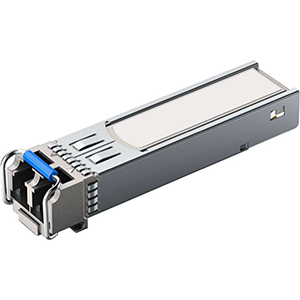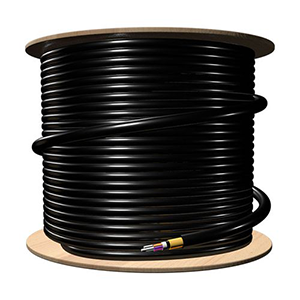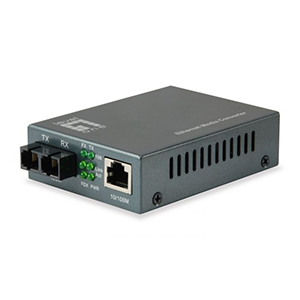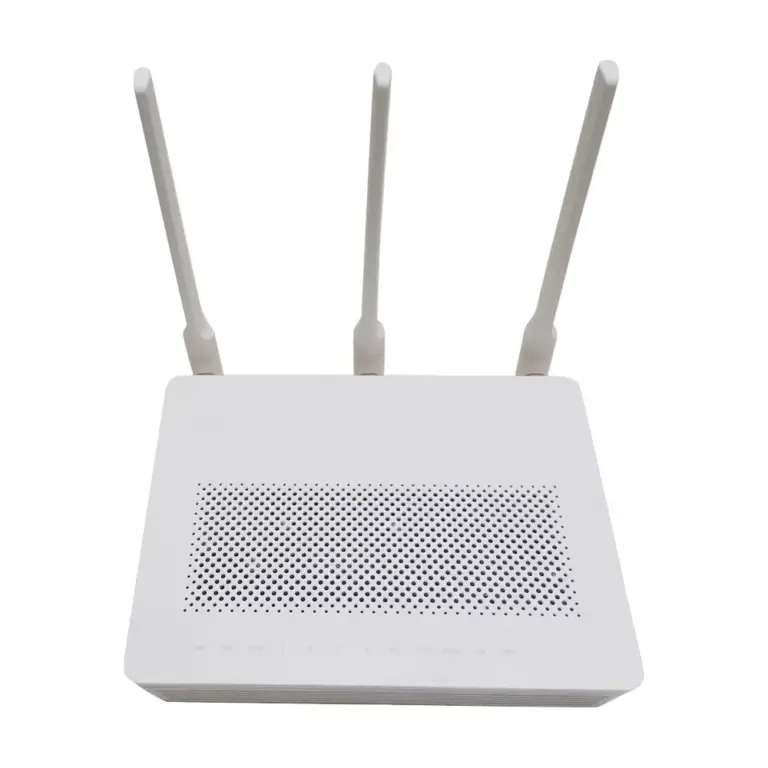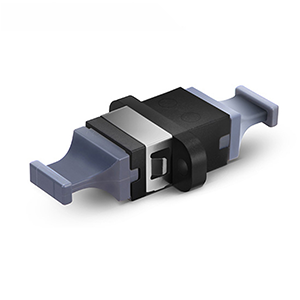Welcome to 10GBE SFP+, a high-speed, small-footprint optical module designed for 10 Gigabits per second (Gbps) Ethernet. 10GBE SFP+ provides high-performance fiber optic connection solutions through its unique SFP+ interface, suitable for connecting high-speed network equipment and fiber optic cables.
The SFP+ interface is a hot-swappable module that is flexible and reliable and can easily connect and replace optical modules. It provides a reliable connection for high-speed data transfer, allowing your network devices to communicate in an efficient manner.
Introduction to 10GBE SFP+
Definition and background:
10GBE SFP+ (10 Gigabit Ethernet Small Form-Factor Pluggable Plus) is a high-speed optical module for 10 Gigabit per second (Gbps) Ethernet. It is part of the SFP+ Multi-Source Agreement (MSA) standard and is designed to provide small size, high speed, and low power consumption solutions to meet network applications with high bandwidth requirements.
10GBE SFP+ originated from the development of Ethernet technology and the growing demand for bandwidth. Traditional Gigabit Ethernet interfaces cannot meet the demand for higher speeds in high-density data centers, enterprise networks and communications service providers. Therefore, 10GBE SFP+ emerged as the times require, providing higher data transfer rates and smaller size to adapt to these application scenarios.
SFP+ interface:
The SFP+ interface is the physical connection interface of the 10GBE SFP+ optical module. It has the following characteristics and functions:
-
Small size: The SFP+ interface is smaller and smaller, allowing the 10GBE SFP+ optical module to be used in limited spaces and suitable for high-density optical fiber connection scenarios. Compared to larger XFP or XENPAK interfaces, SFP+ interfaces can provide higher port density.
-
Hot-swappable: The SFP+ interface supports hot-swappable functionality, allowing optical modules to be plugged and unplugged during operation without shutting down the device or interrupting the network connection. This makes it more convenient and flexible to replace, upgrade or maintain optical modules.
-
High rate: The SFP+ interface supports a data transfer rate of 10GBps, meeting the requirements of 10 Gigabit per second Ethernet. It can be connected to other 10GBE devices through fiber optic cables to achieve high-speed data transmission and communication.
-
Multi-mode and single-mode: The SFP+ interface supports multi-mode and single-mode fiber optic connections to adapt to different fiber types and transmission distance requirements. Multimode fiber is suitable for shorter distance connections, while single mode fiber is suitable for longer distance connections.
The flexibility and high speed of the SFP+ interface make it the preferred solution for a wide range of applications in data centers, enterprise networks and telecommunications. It can connect high-speed network devices such as servers, switches, routers, and storage devices to provide fast and reliable data transmission and communication capabilities.
Features and performance of 10GBE SFP+
Transmission rate:
10GBE SFP+ supports data transfer rates up to 10Gbps (gigabits per second). This makes it ideal for network applications with high bandwidth requirements, such as data centers, enterprise networks and communications service providers. The 10Gbps transmission rate provides faster data transmission and processing capabilities, supporting high-performance applications such as large-capacity file transfer, real-time streaming, virtualization and cloud computing.
Fiber type:
10GBE SFP+ supports multiple fiber types, including single-mode fiber (Single-Mode Fiber, SMF) and multi-mode fiber (Multi-Mode Fiber, MMF). The choice of fiber type depends on the transmission distance and network requirements.
-
Single-mode fiber (SMF): Single-mode fiber is suitable for transmission over longer distances and is often used for long-distance communications spanning several kilometers. It has a smaller core diameter and higher transmission bandwidth, and can support longer-distance transmission.
-
Multimode fiber (MMF): Multimode fiber is suitable for transmission over shorter distances, such as interconnections within data centers. It has a larger core diameter and lower transmission bandwidth, and the transmission distance is usually limited to a few hundred meters.
Wavelength and distance:
The wavelength and transmission distance requirements of 10GBE SFP+ optical modules vary depending on the fiber type.
-
Multimode fiber (MMF): In multimode fiber, the 10GBE SFP+ optical module uses 850 nanometer (nm) wavelength optical signals for transmission. The transmission distance of multimode fiber is usually limited to 300 meters.
-
Single-mode fiber (SMF): In single-mode fiber, the 10GBE SFP+ optical module uses optical signals at 1310 nanometer (nm) or 1550 nanometer (nm) wavelength for transmission. Single-mode optical fiber can achieve longer-distance transmission, and the transmission distance usually ranges from a few kilometers to dozens of kilometers.
It should be noted that the specific transmission distance is also affected by factors such as fiber quality, connector quality, and environmental conditions. In actual applications, appropriate fiber types, wavelengths and optical modules should be selected according to specific conditions to ensure optimal performance and reliability.
Application areas of 10GBE SFP+
data center:
10GBE SFP+ is widely used in data centers and is mainly used to achieve high-speed, high-bandwidth data transmission and connections. The following are common applications for using 10GBE SFP+ in the data center:
-
High-speed connection between servers: 10GBE SFP+ optical modules can be used to connect servers in the data center, providing fast data transmission and communication capabilities. This high-speed connection is important for large-scale data processing, virtualized environments and cloud computing.
-
Interconnection of network switches and routers: Network equipment in the data center, such as switches, routers and firewalls, can be interconnected using 10GBE SFP+ optical modules. This provides high-throughput, low-latency network connections and supports traffic management and data forwarding within the data center.
Teleworking and campus networking:
10GBE SFP+ can also play an important role in remote office and campus networks to meet high-speed data transmission and connection requirements. Here are some applications using 10GBE SFP+ in these scenarios:
-
High-speed connections between buildings: For situations where high-speed connections are required between different buildings in large corporate office buildings or school campuses, 10GBE SFP+ optical modules can provide fast and reliable data transmission and communication capabilities. It can be used to connect switches or routers between buildings to achieve high-bandwidth data exchange.
-
Remote data transmission: For situations where a large amount of data needs to be transmitted remotely, such as data backup, replication or sharing across cities or campuses, 10GBE SFP+ optical modules can provide high-speed data transmission channels. It can connect servers, storage devices or data centers in different locations through optical fibers to achieve fast and efficient data transmission.
These application fields are just some examples of 10GBE SFP+. In fact, due to its high speed, hot-swappable and flexible characteristics, 10GBE SFP+ is widely used in various scenarios that require high-bandwidth and high-performance network connections, including telecommunications. Operators, financial institutions, medical fields and scientific research institutions, etc.
Advantages and considerations of 10GBE SFP+
High-speed transmission and low power consumption:
10GBE SFP+ offers the following advantages, making it an ideal choice for high-speed data transfer and low power consumption requirements:
-
High-speed transmission: 10GBE SFP+ supports data transmission rates up to 10Gbps, providing large bandwidth and fast data transmission capabilities. This makes it suitable for scenarios that require processing large amounts of data, performing real-time streaming, or running high-performance applications, such as data centers, cloud computing, and virtualized environments.
-
Low power consumption: 10GBE SFP+ optical module adopts advanced chip and electronic design to reduce power consumption. Compared with other high-speed transmission technologies, such as 10GBASE-T (which uses copper cable connections), 10GBE SFP+ generates less heat and consumes less power during transmission. This makes it more suitable in applications that need to maintain low energy consumption environments or have strict energy efficiency requirements, such as large data centers and enterprise networks.
Flexibility and scalability:
10GBE SFP+ has the following features, making it flexible and scalable in network design:
-
Optical fiber and module selection: 10GBE SFP+ optical modules can use different types of optical fibers, including single-mode fiber (SMF) and multi-mode fiber (MMF). This flexibility allows network designers to select appropriate fiber types and modules based on specific needs to meet different transmission distance and performance requirements.
-
Hot-swappable and replaceable: 10GBE SFP+ optical modules are hot-swappable and can be plugged or replaced during operation without interrupting the entire network. This replaceability makes network maintenance and upgrades more flexible and convenient. Modules can be added, replaced or upgraded as needed to adapt to changing network needs.
-
Scalability: 10GBE SFP+ technology can be easily expanded to higher rates, such as 40Gbps or 100Gbps, by using different types of optical modules and optical fibers. This scalability makes 10GBE SFP+ a choice with high long-term investment value and can be smoothly upgraded and expanded as network needs grow.
How to install and configure 10GBE SFP+
Connector type:
10GBE SFP+ optical modules use different types of connectors, the most common ones are LC and MPO. Here is an introduction to these two connector types:
-
LC Connector: The LC connector is a small fiber optic connector with low insertion loss and high reliability. LC connectors are typically used for single-mode fiber (SMF) connections and are suitable for longer distance transmission. Each LC connector has a 1.25mm attachment for connecting fiber optics.
-
MPO connector: MPO connector is a multi-fiber connector that can connect multiple optical fibers at the same time. It is usually used for multimode fiber (MMF) connections and is suitable for short-distance transmission. MPO connectors have multiple fiber channels to provide higher bandwidth and density. In some cases, MPO connectors can be converted to LC connectors through adapters to enable connections to other devices.
Fiber optic cleaning and protection:
In order to ensure good optical signal transmission and equipment performance of 10GBE SFP+, the cleaning and protection of optical fibers are crucial. Here are some common fiber optic cleaning and protection methods:
-
Fiber Optic Cleaning: It is important to clean fiber optic connectors and fiber ends regularly to remove impurities such as dust, dirt, and grease. Special fiber optic cleaning rods or cleaning boxes can be used for cleaning. Be careful to avoid touching the fiber end directly to avoid damage or contamination.
-
Fiber optic protection: It is also important to protect optical fibers from physical damage and environmental influences. Use appropriate protective sleeves or jackets to ensure that the fiber is not bent or pulled during installation and cabling. In addition, avoid exposing optical fibers to excessive temperatures, humidity, or chemical corrosive substances to prevent damage to fiber performance.
-
Fiber optic detection: When installing and configuring 10GBE SFP+, using a fiber optic detector can help confirm the strength and quality of the optical signal. This allows potential fiber optic connection issues to be identified early and appropriate steps can be taken to adjust and repair them.
Compatibility and standards of 10GBE SFP+
MSA standards:
The compatibility of 10GBE SFP+ optical modules is based on the MSA (Multi-Source Agreement) standard. MSA is a multi-vendor standard designed to ensure interoperability between 10GBE SFP+ modules and devices from different vendors. By following the MSA standard, modules from different manufacturers can be used interchangeably in the same network equipment without worrying about compatibility issues.
The MSA standard defines the mechanical, electrical and optical specifications of the 10GBE SFP+ module, including external dimensions, interface design, electrical characteristics and optical performance, etc. This way, 10GBE SFP+ modules from different vendors can follow the same specifications, ensuring they work properly in standards-compliant devices. This multi-vendor compatibility provides users with more choices and promotes market competition and technological innovation.
Electrical and optical specifications:
10GBE SFP+ optical modules follow a series of electrical and optical specifications to ensure their performance and interoperability. Here are some common electrical and optical specifications:
-
Transmit Power: Transmit power refers to the power level of the optical signal sent by the 10GBE SFP+ module. It is usually expressed in milliwatts (mW) or decibel milliwatts (dBm) and has a range of minimum and maximum transmit power defined in the specification.
-
Receive Sensitivity: Receive sensitivity refers to the lowest power level at which the 10GBE SFP+ module can receive and interpret optical signals. It is usually expressed in milliwatts (mW) or decibel milliwatts (dBm), and the requirements for receive sensitivity are defined in the specification.
-
Operating Temperature Range: The operating temperature range defines the temperature range in which the 10GBE SFP+ module can operate normally. This range is usually expressed in degrees Celsius (°C) and ensures stable operation of the module in a variety of environmental conditions.
In addition to the above specifications, 10GBE SFP+ modules also need to comply with other specifications, such as clock frequency, electrical characteristics, optical insertion loss, etc. These specifications ensure proper communication and interoperability of 10GBE SFP+ modules with other compatible devices.
Summarize:
10GBE SFP+ is a high-speed, small-size optical module that provides high-performance optical fiber connection solutions through the SFP+ interface. It has excellent features and performance, supports transmission rates up to 10Gbps, and is compatible with different types of optical fibers.
10GBE SFP+ is widely used in data centers, remote offices, and campus networks. Its high-speed transmission and low power consumption make it an ideal choice for those with strict network performance and energy-saving requirements.
- What is the difference between SFP 10G and SFP+ 10G?
- Can 10G SFP+ run at 1G?
- What is the range of 10G SFP+?
- Can 10Gb SFP run at 2.5 GB?
- How do I know if my SFP is 1G or 10Gb?
- Is 10GbE compatible with 1GbE?
- Can 10Gb SFP run at 1Gb cisco?
- What is the difference between 10Gb SFP and SFP+?
- What are 10G SFP+ ports used for?
- What is 10G SFP 100km?



